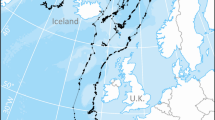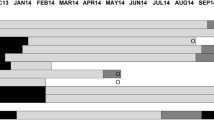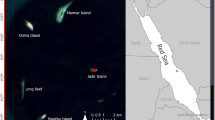Abstract
ALTHOUGH the study of seabirds in their land-based breeding colonies has attracted much attention, an understanding of their ecology at sea, particularly their foraging range and the location of their feeding zones, remains a major challenge1. The foraging range of pelagic feeders nesting on a given colony or island is purely speculative2,3. Since the eighteenth century4, the Wandering albatross (Diomedea exulans) has been thought to be one of the most widely ranging seabirds, and breeders are thought to travel up to 1,800 km from the nest on foraging trips5,6. Here, we describe the first successful tracking of a bird using satellite telemetry. Tracks of Wandering albatrosses in the southwestern Indian Ocean showed that they covered between 3,600 and 15,000 km in a single foraging trip during an incubation shift. They flew at speeds of up to 80 km per h and over distances of up to 900 km per day. They remained active at night, particularly on moonlit nights and wind appeared to have a major influence on the foraging strategy of these albatrosses. Detailed knowledge of their movements at sea may prove critical to the conservation of the Wandering albatross and particularly of the closely related Amsterdam albatross (D. amsterdamensis), both of which are endangered7–9.
This is a preview of subscription content, access via your institution
Access options
Subscribe to this journal
Receive 51 print issues and online access
$199.00 per year
only $3.90 per issue
Buy this article
- Purchase on Springer Link
- Instant access to full article PDF
Prices may be subject to local taxes which are calculated during checkout
Similar content being viewed by others
References
Croxall, J. P. Seabirds Feeding Ecology and Role in Marine Ecosystems (Cambridge University Press, Cambridge, 1987).
Harrison, C. S. & Seki, M. P. in Seabirds Feeding Ecology and Role in Marine Ecosystems (ed. Croxall, J. P.) 305–326 (Cambridge University Press, Cambridge, 1987).
Pennycuick, C. J., Croxall, J. P. & Prince, P. A. Ornis Scand. 15, 145 (1984).
Coleridge, S. T. The Rhyme of the Ancient Mariner (1798).
Tickell, W. L. N. Ant. Res. Ser. 12, 1–55 (1968).
Weimerskirch, H. & Jouventin, P. OTkos 49, 315 (1987).
Jouventin, P., Stahl, J. C. & Weimerskirch, H. Int. Council Birds Pres. Tech. Publ. 4, 609 (1984).
Jouventin, P. & Roux, J. P. Nature 305, 181 (1983).
Weimerskirch, H., Clobert, J. & Jouventin, P. J. Anim. Ecol. 56, 1043 (1987).
Ray, G. C. et al. Science 202, 521 (1978).
Obrecht, H. H., Pennycuick, C. J. & Fuller, M. R. exp. Biol. 135, 265 (1988).
Croxall, J. P. & Ricketts, R. C. Ibis 125, 33 (1983).
Pennycuick, C. J. Phil. Trans. R. Soc. Lond. B300, 75 (1982).
Fressanges du Bost, D. & Segonzac, M. Com. Nat. Franç, Rech. Ant. 40, 53 (1976).
Author information
Authors and Affiliations
Rights and permissions
About this article
Cite this article
Jouventin, P., Weimerskirch, H. Satellite tracking of Wandering albatrosses. Nature 343, 746–748 (1990). https://doi.org/10.1038/343746a0
Received:
Accepted:
Issue Date:
DOI: https://doi.org/10.1038/343746a0
This article is cited by
-
Effects of Avian Wings Color Patterns on Their Flight Performance: Experimental and Computational Studies
Journal of Bionic Engineering (2023)
-
Optimization of Thrust-Augmented Dynamic Soaring
Journal of Optimization Theory and Applications (2022)
-
Non-breeding distribution, activity patterns and moulting areas of Sooty Albatrosses (Phoebetria fusca) inferred from geolocators, satellite trackers and biochemical markers
Polar Biology (2022)
-
Foraging conditions for breeding penguins improve with distance from colony and progression of the breeding season at the South Orkney Islands
Movement Ecology (2021)
-
A noise robust automatic radiolocation animal tracking system
Animal Biotelemetry (2021)
Comments
By submitting a comment you agree to abide by our Terms and Community Guidelines. If you find something abusive or that does not comply with our terms or guidelines please flag it as inappropriate.



